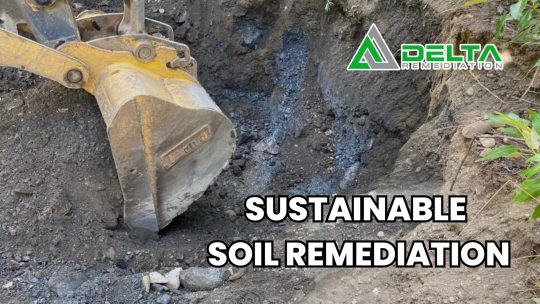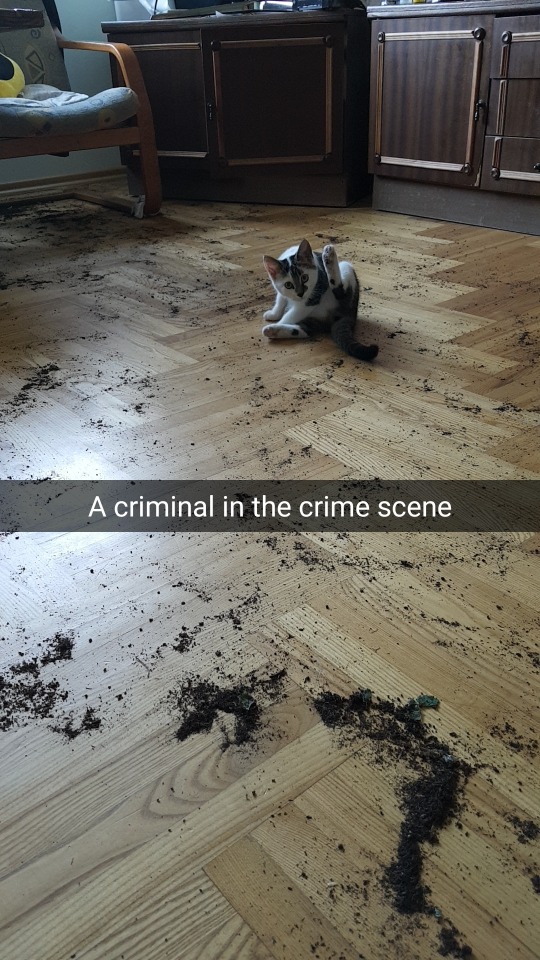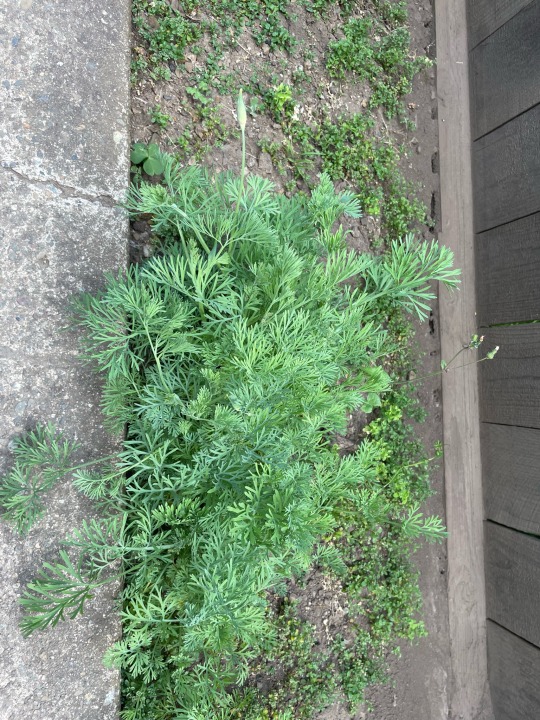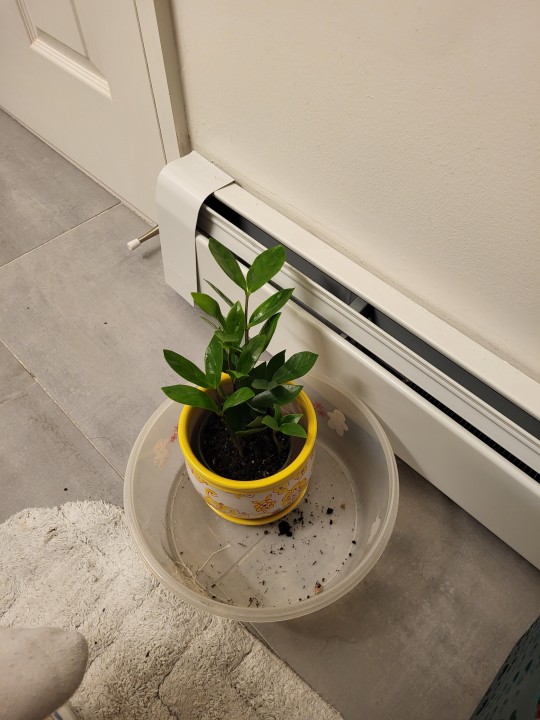#soil washing
Text

Revitalizing Our Earth: An All-Encompassing Approach to Sustainable Soil Remediation
Introduction
The process of soil remediation is of paramount importance to the conservation of our environment. Contaminated soils have far-reaching implications on our ecosystem, affecting not only humans but wildlife as well. This comprehensive guide delves deep into various soil remediation methods, emphasizing the most efficient techniques to rejuvenate tainted soils and return them to a healthy state.
Recognizing the Various Forms of Soil Contamination
Chemical Pollution: This arises when harmful chemicals like heavy metals, pesticides, and petroleum byproducts seep into the soil, potentially posing severe threats to human health and the environment.
Biological Pollution: Disease-causing agents such as bacteria, viruses, and parasites may infiltrate the soil, negatively impacting both human and animal health.
Physical Pollution: This encompasses the existence of debris like construction materials, plastics, and other solid waste, which can interfere with the natural structure and functionality of soil ecosystems.
Leading Practices for Soil Remediation
Excavation and Disposal: Excavation involves the manual removal of polluted soil and disposing of it at designated hazardous waste facilities. Although effective for localized contamination, it can be costly and needs considerable logistical planning.
Soil Washing: This technique involves the use of water, chemical, and physical processes to extract pollutants from soil particles. It is especially effective in treating soils polluted with heavy metals, hydrocarbons, and other soluble inorganics such as chlorides.
Bioremediation: This environmentally friendly method leverages naturally occurring microorganisms to degrade pollutants within the soil. It can treat a wide range of pollutants, including petroleum products, pesticides, and chlorinated solvents.
Phytoremediation: Phytoremediation employs plants to extract contaminants in the soil through accumulation. It is particularly effective in treating soils polluted with heavy metals.
Thermal Desorption: This process involves heating contaminated soil to high temperatures, vaporizing the pollutants, which allows for their capture and treatment. It is highly effective for treating soils contaminated with volatile organic compounds (VOCs) and semi-volatile organic compounds (SVOCs).
Soil Stabilization: Soil stabilization requires adding binding agents like cement or lime to contaminated soil, immobilizing pollutants to prevent their migration and reduce their bioavailability to plants and animals.
Deciding on a Soil Remediation Method: Key Considerations
Choosing the most appropriate soil remediation method requires considering factors like the extent and type of contamination, soil properties, cost and time constraints, and the potential risks to human health and the environment.
Ensuring Success through Monitoring and Evaluation of Soil Remediation Projects
The key to a successful soil remediation project lies in ongoing monitoring and evaluation, which involves regular testing of soil samples, as well as groundwater monitoring, to ensure that the chosen remediation method is effective and contaminants have been successfully eliminated or reduced to acceptable levels.
Conclusion and Future Prospects
Soil remediation plays a crucial role in environmental protection and public health endeavors. As our knowledge of soil contamination and remediation methods continues to expand, so does the development of innovative methods and technologies. These advancements promise significant improvements in efficiency, cost-effectiveness, and the environmental impact of soil remediation efforts.
Soil Remediation and Sustainable Development
Soil remediation is a significant component in achieving sustainable development goals by mitigating the adverse impacts of soil contamination on human health, biodiversity, and ecosystem services. Investment in soil remediation projects and adopting best practices ensure the return of contaminated land to productive use, contributing to the long-term health and wellbeing of communities and ecosystems.
Public Awareness and Community Engagement
Elevating public awareness and fostering community involvement are key to the success of soil remediation projects. Actively engaging with local communities, enlightening them about the risks related to soil contamination, and involving them in remediation efforts' planning and execution, cultivates a sense of ownership and responsibility for the health of our communal environment.
Regulatory Guidelines and Governmental Support
Robust regulatory frameworks and governmental backing are crucial for the successful execution of soil remediation projects. This includes formulating and enforcing stringent environmental standards, as well as providing financial and technical support to bolster remediation initiatives. Through a collaborative approach, governments, industries, and communities can effect positive change and make significant strides towards tackling the global challenge of soil contamination.
Concluding Remarks
Soil remediation is a critical element of environmental protection and public health strategies. By understanding the various forms of contamination and the most effective remediation techniques, we can strive towards revitalizing contaminated soils and safeguarding the health of both our ecosystems and human populations. Choosing the right remediation method demands careful consideration of factors such as the type and extent of contamination, soil properties, cost and time constraints, and potential environmental and human health risks. Monitoring and evaluation are key components of any soil remediation project to guarantee its long-term success and confirm that contaminants have been effectively managed.
The Future of Soil Remediation
As our comprehension of soil contamination and remediation techniques improves, innovative methods and technologies are persistently being developed. These advancements hold the potential to considerably enhance the efficiency, cost-effectiveness, and environmental impact of soil remediation initiatives. By staying informed about the latest research and progress in the field, we can aim towards implementing more sustainable and effective solutions to tackle soil contamination issues and safeguard our environment for future generations.
#soil remediation#contaminated soils#environmental conservation#soil contamination#sustainable development#excavation#soil washing#bioremediation#phytoremediation#thermal desorption#soil stabilization#monitoring and evaluation#sustainable solutions#community engagement#regulatory guidelines#governmental support#environmental standards#future prospects#innovative technologies#public health#ecosystem services
1 note
·
View note
Text
me every time I see fanart of the Lamb taking a bath: pls……..you’ve washed out their lanolin……..they need that or else their skin will not be protected from moisture!!!!! now they can’t go into Anura or Anchordeep for like 2 weeks or they might get sheep scab and skin issues!!! What have you done
#I’m kidding btw the art is very cute#I just laugh about it half the time but tbh it would make sense if u contextualize it in the Lamb always wanting to present themselves as#pristine and eternally cleanly. divinely clean and unable to be soiled. an incorruptible body#this is such a Neves-coded post unforunately#the washing however is common for people who work with showing sheep or before the yearly shearing—or during Lambing season#so this isn’t a hard rule but it’s recommended to just leave sheep alone lmao
24 notes
·
View notes
Text
spencer is the only thing keeping the acachalla house from being infested with bugs and rodents such as rats and mice. this is why they keep him around and also why they do not let him leave. hes like a barn cat
#im partially joking ofcourse they keep him around because he is a beloved son and brother and familly values ^^#but he does also keep the house free of vermin. besides himself SORRY HES ME SO IM ALLOWED 2 BE MEAN#also remember how at some point the acachallas moved to a different house and left spencer behind in the abandoned original house#and they came back to get their money out of the washing machine or whatever and he rose out of the soil to be like#GTFO this is my house now!!!!!! and they only conceded because sally was a kirby and he helped her get normal again. remember that#i prefer a continuity where they all live together in the original house of course but this situation in canon is very interesting to me.#the acachallas have multiple locations opened up and spencer is hunting all the mice out of the one he lives in. hes eating good for once#venturiantale#taleblr#evilmartin430.txt#spencer acachalla
38 notes
·
View notes
Text
I've only ever been pissed off at night shift once before.
Until today.

#pov talia walking through the hospital hallway after needing to wash and change a soiled and soaked patient#all while every single nurse is asking her for morning vitals#i love my job guys#i dont know if I'm being sarcastic anymore
7 notes
·
View notes
Text

I have pet isopods now
#rambling#isopods#invertibrates#porcellio scaber#bugs#they have the koi morph and were $10 at the Arlington NARBC#also i know they aren’t technically bugs but they are in spirit#also it helps folks who want bug-like stuff filtered#anyways they’re gonna get a bigger house sometime this week hopefully#I’m setting up a terrarium for them and the graffiti legion#Aka Vandalism’s 100+ spiderlings who have been living in a plastic bag for those unaware of my Charlotte’s Web moment#already have a drainage layer set up but am washing the soil I plan to use as substrate#since I wanna make sure it doesn’t have any pesticide residues or pathogens#drying it will take a not small amount of time
22 notes
·
View notes
Text
looking at that blood v. piss poll like "i've gone through far too many blood safety/sanitation lessons to reasonably pick blood"
#like i am licensed to wax every inch of the human body and besties i'm picking piss every time#for the simple knowledge of how long hepatitis b survives in direct contact with air#like most bbps die within minutes of air exposure but my good friend hep b MAINTAINS#which btw the protocol for bloodspill is stop. wash/sanitize hands. gloves. stop the bleeding. sanitize area and dispose of soiled items.#and this isnt to say blood is like a big deal its not and youre not going to get any pathogen from simply TOUCHING blood thats not it#but that having a small open wound is not uncommon for most people
3 notes
·
View notes
Text

Caturday
#caturday#man i still remember this day#i just came home and that one flower was yanked out of the pot#and the soil from its roots just EVERYWHERE#and i just went in and she was washing her ass like what are you looking at#not a textpost
6 notes
·
View notes
Text





they grow every where except my backyard, so earlier in the year i planted them and im so happy that i did because i get so happy seeing the vibrant yellowy-orange petals!!!
#i planted them during what I thought was the end of the rain storms only for it to rain for another two weeks#so i thought they would get washed away since the soil in that area is so loose (another reason why I planted native flowers)#and look at them!!!! doing so well!!! it’s going to keep blooming for the rest of the summer#however long that is#top photos are from february/march and the bottom are from today#my rambles
6 notes
·
View notes
Text
holy shit I did so much laundry today lol
#I get rly paranoid abt Smell#and lately everything has just seemed#idk#extra stinky no matter what I do#but I managed to wash a set of sheets all my towels every single one of them 50% of my wardrobe my shower curtain and my couch pillow cases#and I used hot water instead of cold for a change#and the heavy soil option (which costs 50 cents more)#and I used this downy rinse that's supposed to help get the built up residue off#bc I noticed last time a bunch of my stuff came out literally felt disgusting right out of the dryer#and I'm 90% sure it helped SO SO SO MUCH#everything at least FELT really clean while I was folding it#somebody was eating something in the laundromat tho and i smelled onions while I was folding and almost started crying#bc I got so scared that was my clothes lol#it's hard for me to tell bc I go nose blind rly super fast#but I THINK everything smelled really nice and fresh#except the 2 silk Blankies I sleep w under my head /:#I even soaked them in hot water oxiclean and baking soda for an hour and then just hot water water and baking soda for another 30 minutes#before I washed them#and they FEEL significantlyyyyyyyyyy cleaner and softer and nice#but they still stink /:#but I also can't sleep without them bc I can't stand the feeling or Sound of my pillow#they're my most embarrassing autistic quirk ever lol but I need them to sleep#I have 3 so I can cycle them during the night if I wake up and the one I have wrapped around my face is too warm lol#anyway I'm still not done yet tho!!! I gotta sort out the remaining laundry for my next big haul#(the other half of my closet my activewear and Whites and my other 3 sets of sheets)#and strip / change my bed#and vacuum my bedroom rly well#before I can put away the laundry I did today
5 notes
·
View notes
Text
0 notes
Text

Soil Remediation: Breathing Life Back Into Contaminated Land
Introduction
Soil remediation is an essential process that tackles soil contamination and restores the health and fertility of the land. This process is necessary due to the accumulation of harmful substances in the soil, which can be caused by industrial pollution, agricultural activities, and waste disposal. Soil contamination poses a significant threat to human health and the environment, making soil remediation a crucial step in preserving the planet for future generations. This article delves into the importance of soil remediation, the different techniques used, and the challenges faced in implementing these methods.
Importance of Soil Remediation
Soil remediation is vital in maintaining the balance of ecosystems and ensuring the productivity of agricultural land. Contaminated soil can lead to a range of negative consequences, such as reduced crop yields, degradation of water quality, and harm to human health through the consumption of contaminated produce. Furthermore, soil contamination can have disastrous impacts on the biodiversity of ecosystems, affecting the delicate balance of plant and animal life. By remediating soil, we can protect the health of our environment and communities while also ensuring the sustainability of our food systems.
Techniques for Soil Remediation
Various soil remediation techniques have been developed to combat different types of soil contamination. These methods can be broadly classified into two categories: in-situ and ex-situ.
In-situ Remediation: This process involves treating the contaminated soil in its original location. Some of the popular in-situ techniques include:https://deltaremediation.com/bioremediation-an-eco-friendly-solution-for-environmental-cleanup/In-situ Remediation: This process involves treating the contaminated soil in its original location. Some of the popular in-situ techniques include:
a. Bioremediation: This method uses microorganisms to break down contaminants in the soil. Certain microbes can metabolize pollutants, transforming them into less harmful substances or even harmless byproducts. Bioremediation is cost-effective and eco-friendly, making it a popular choice for treating organic contaminants, such as hydrocarbons and pesticides.
b. Soil Vapor Extraction: This technique is used for volatile organic compounds (VOCs) present in the soil. A vacuum system extracts the vapors from the contaminated soil, which are then treated to remove the contaminants before being released into the atmosphere.
Ex-situ Remediation: In this process, contaminated soil is excavated and treated off-site. Some of the common ex-situ techniques are:
a. Soil Washing: This method uses water, surfactants, or other chemicals to wash the contaminated soil, separating the pollutants from the soil particles. The clean soil can then be returned to its original location, while the contaminants are treated and disposed of.
b. Thermal Desorption: This technique involves heating the soil to evaporate the contaminants. The vapors produced are collected and treated, while the soil is cooled and returned to its original location.
Challenges in Soil Remediation
Despite the availability of numerous soil remediation techniques, there are several challenges that practitioners face. These include:
Site-Specific Factors: Soil remediation strategies need to be tailored to the unique characteristics of each site, such as soil type, depth of contamination, and the nature of pollutants. This requires extensive assessment and planning, which can be time-consuming and costly.
Regulatory Constraints: Soil remediation projects must adhere to strict environmental regulations and guidelines. Compliance with these regulations can be a complex and lengthy process.
Economic Factors: Soil remediation can be an expensive endeavor, particularly for large-scale contamination. Securing funding and resources for these projects can be a significant challenge.
Conclusion
Soil remediation plays a critical role in protecting our environment and ensuring the health and sustainability of our communities. Although there are challenges in implementing remediation techniques, continued research and innovation in this field can help to develop more efficient and cost-effective solutions. By prioritizing soil remediation, we can breathe life back into contaminated land and preserve the health of our ecosystems for generations to come.
As global populations continue to grow and urbanization expands, the demand for food production and land use will only increase. Consequently, the need for effective soil remediation will become even more crucial in the coming years. With advancements in technology and collaboration between researchers, governments, and industries, we can continue to develop and refine soil remediation techniques to tackle soil contamination effectively.
Ultimately, soil remediation is not only about addressing the immediate consequences of contamination but also about taking preventive measures to minimize future pollution. By promoting responsible industrial practices, sustainable agricultural methods, and effective waste management, we can mitigate the risk of soil contamination and safeguard the future of our planet. Investing in soil remediation today will help ensure a healthier, more sustainable world for the generations that follow.
#soil remediation#contaminated land#in-situ remediation#ex-situ remediation#bioremediation#soil washing#soil vapor extraction#thermal desorption#environmental regulations#sustainability#food systems
0 notes
Text
Honestly moving my mothers garden stuff does suck- but… I will admit, I feel like I’ve gotten stronger because of it (arm wise)
#i spent most of yesterday cleaning the house and even outside-#i cleaned and washed off the porch and cleaned the garbage can-#also threw some molch and potting soil in the back yard over the fence near the shed#only down side of my work is that I feel achy 🤣#my back is killing me from the porch bit#but there’s just something about these things that makes me happy in the end#like i did all that myself!#and I’m proud of myself#kait rambles
2 notes
·
View notes
Text
repotted my spider plant in a last ditch attempt to save him from root rot...my guy's on the plant equivalent of an icu. #PrayersForTopper
#hes the only plant ive ever kept alive i had to repot him twice because he got so big he didnt fit on my desk anymore..and now hes frail#and bare </3...they tell u to get rid of the dead leaves and wash the roots and try to cut off the brown looking ones and well the trouble#with that is all the roots look slightly brown because theyre sitting in soil all the time. but we've done our best..we can only hope now..#(ridi's) bigmouth strikes again
3 notes
·
View notes
Text
quarantining him. bathroom time.

#its a gift for a friend for a secret santa!!!!#but other plants had pests at lowes so its time for naughty boys to be kept in the bathroom#(dw im repotting him tonight. i think hes fine but new soil & washed roots & cleaned leaves should ensure most pests are clear)#ellis.txt
7 notes
·
View notes
Text
So it turns out that if I wake up at 5:30 am after a restless night’s sleep, hike partway up a mountain on a whim, and then drive a couple of hundred miles, I wind up tired at the end of the day 😂
#it was only a little way up the mountain#walking uphill takes the wind right out of me :’D#it was a nice way to start the morning though!#recent rain had washed out super deep rivules in the trail; I could see a bunch of redox features in the soil :)#(the trail was pretty thoroughly firm by the time I was walking; I didn’t leave even faint footprints in the gravel)#life flails#my stuff#gonna go flop now
3 notes
·
View notes